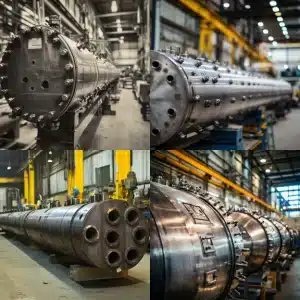
Getting welding certification classes involves learning the basics, selecting an accredited provider, and passing a TIG welding certification test. Ongoing practice, refreshers, and advanced training help welders stay competitive for careers in fabrication, pressure vessels, and prefabrication projects.
Step-by-Step Guide on How to Get Welding Certification Classes
If you’re looking for GTAW (Gas Tungsten Arc Welding) certification classes, you’re in the right place. GTAW, also called TIG welding, uses a tungsten electrode and protective gas to create precise welds. Many think certification requires advanced skills, but plenty of providers offer flexible welding certification programs, some with no prerequisites. Red River, an ASME Certified AWS member, provides modular training options to fit your schedule and career goals. Below is a step-by-step guide on how to get welding certification classes and move from research to certification.
How to get welding certification classes
You want a structured way to enroll, train, and earn your credentials. That means looking for welding certification programs that fit your schedule, understand your skill level, and prepare you for the toughest job requirements. Whether you plan to work with mild steel or advanced projects like pressure vessel fabrication, this guide will give you the roadmap.
Step 1: Learn welding basics
Before you sign up for any formal class, it helps to gather basic knowledge about welding processes. Begin by understanding the difference between popular methods:
- MIG (Metal Inert Gas): Uses a continuous wire feed and is often simpler for beginners to control.
- TIG or GTAW (Gas Tungsten Arc Welding): Relies on a tungsten electrode, typically produces cleaner welds, and is best for precision projects.
- Stick (Shielded Metal Arc Welding): Commonly used in construction and repair, but requires more skill with rod angles.
Quick online guides or short demos can give you a head start before in-person sessions. Many schools cover safety gear, welding joints, and protective clothing in an intro module. If you’re interested in TIG, check out our tig welding certification resource for prerequisites and tips. Even a little prep makes classes more productive.
Step 2: Pick a recognized provider
Your success hinges largely on the quality of the training center you choose, especially if you plan to take a TIG welding certification test. Be sure to check for:
- Accreditations: Credible providers often hold AWS (American Welding Society) membership or ASME (American Society of Mechanical Engineers) certifications. Red River, for example, has U4 & R stamps, demonstrating authority and competence in handling advanced projects.
- Experienced instructors: Look for leads like Brandon or Chris at Red River—individuals who have years of welding experience and understand multiple metals and positions.
- Tailored programs: Some training centers also offer specialized tracks, such as pressure vessel fabrication or modular skid construction. This approach helps you refine your welding focus.Don’t hesitate to ask a potential school about their class sizes, pass rates, and hands-on hours. You will find many providers listing these stats on their websites. If you aim for a future in advanced fabrication, a recognized provider can open up extra opportunities for both job placement and continuing education.
Don’t hesitate to ask about class sizes, pass rates, and hands-on hours. A recognized provider can open up opportunities in both employment and continuing education.
Step 3: Practice essential techniques
Once you have enrolled, put as much emphasis on hands-on practice as you do on classroom theory. Many beginners underestimate the value of repeated muscle memory for welding. Here are some techniques to focus on:
- Torch Angles: Experiment with different angles to see how they affect your weld’s penetration and bead shape.
- Filler Rod Timing: Practice feeding filler rod at steady intervals, especially crucial for TIG/GTAW to maintain a smooth weld puddle.
- Speed Control: Move your torch at a pace that avoids burn-through. For thicker metals, slow down. For thinner sheets, keep a consistent, balanced movement.
This focus will help you build consistency, especially for precision work like pressure vessels or metal fabrications.
Step 4: Take your certification test
When you feel ready, your training provider will often guide you toward a formal TIG welding certification test. This exam typically includes both a written portion on safety and theory, plus a hands-on performance test. If you are focusing on GTAW, expect tasks such as butt joints on different thicknesses of metal or an all-position weld that challenges your skill with overhead angles. Here is a snapshot of what to expect:
| Test Component | What It Assesses | Typical Format |
| Safety & Theory | Basic welding principles | Multiple-choice |
| Practical Welding | Technique & weld quality | Demonstration on plates or pipes |
| Visual Inspection | Weld appearance & defects | Inspector review |
| Bend Test | Structural integrity | Plates bent for cracks |
Welders who pass can advance into specialized fields like pulsation vessels or prefabrication projects.
Step 5: Maintain your new skills
Earning your welding certification is a major accomplishment, but the learning does not end when you pass your test. Welding standards shift with industry demands, new materials emerge, and improved safety protocols can appear. So it helps to stay updated:
- Attend refresher courses: Even a two-day class once a year can keep your technique sharp.
- Seek advanced endorsements: After your basic certification, you can branch into specialized qualifications such as pressure vessel welding. This extra milestone lets future employers see you are fully prepared to handle complex projects.
- Connect with peers: Share best practices, request feedback, and discuss new developments in online forums or local welding society chapters.
You can also schedule check-ins with your instructor or a mentor who can highlight any bad habits you might inadvertently pick up. This keeps you aligned with current standards. If your initial goal leads you to additional paths, you might explore welding certification classes to expand your credentials further.
Step 6: Maintain your new skills (prefabrication & onsite safety)
Prefabrication is on the rise, with modules welded off-site to cut job-site risks and improve quality in controlled shops. Red River leads in this area with advanced modeling for spool drawings and custom modules. Training in these methods gives you a strong edge for safer, more efficient projects and keeps you competitive in the workforce.
How to get welding certification classes
Success in welding classes comes from choosing the right provider, practicing consistently, and staying open to growth. Accredited training, such as programs from ASME Certified AWS members, builds strong fundamentals for GTAW or other paths. With steady effort and planning, certification opens doors to advanced roles in fabrication and high-pressure work, proving your skills under tough tests.
Take the Next Step in Your Welding Career
Looking for the best options on how to get welding certification classes? Enroll in accredited programs today to gain hands-on skills, industry-recognized certification, and career-ready expertise.
Frequently asked questions
1. Where to get tig welding certification?
You can get a TIG welding certification from accredited trade schools, welding training centers, or industry-recognized organizations like the American Welding Society.
2. What is tig welding certification?
A TIG welding certification is an official credential that proves a welder’s skill and competency in Gas Tungsten Arc Welding through written and practical exams.
3. How long does a typical introductory program last?
It depends on the provider. Some courses can last only a few weeks for basic instruction, while more advanced or comprehensive programs might stretch to several months, especially if they include specialized modules like prefabrication.
4. What welding process should I pick first?
If you want clean, precise welds, GTAW (TIG) is a good option, though it can be challenging. If you prefer a more beginner-friendly process, MIG might be a simpler entry point. It’s best to get advice from your instructor based on your goals.
5. Is GTAW certification the same as TIG welding certification?
Yes. GTAW stands for Gas Tungsten Arc Welding, commonly known as TIG. So you are essentially pursuing the same certification. You might see the acronym “GTAW” used more formally in certain organizations or documentation.
6. Can I specialize in modular welding right after I get my certificate?
You can expand into modular, skid-based, or prefabrication welding once you have a base certification. Some providers like Red River offer these advanced options, leveraging your existing skills in a specialized environment.
Key takeaways
- Start with a reputable training center that has proper AWS or ASME credentials.
- Familiarize yourself with welding basics and practice hands-on techniques consistently.
- Consider focusing on TIG/GTAW if you want precise, high-quality welds for advanced projects.
- Remember that the certification test includes both theory and practical components, so study both thoroughly.
- Stay in touch with industry developments and refresh your skills regularly to maintain your edge.




